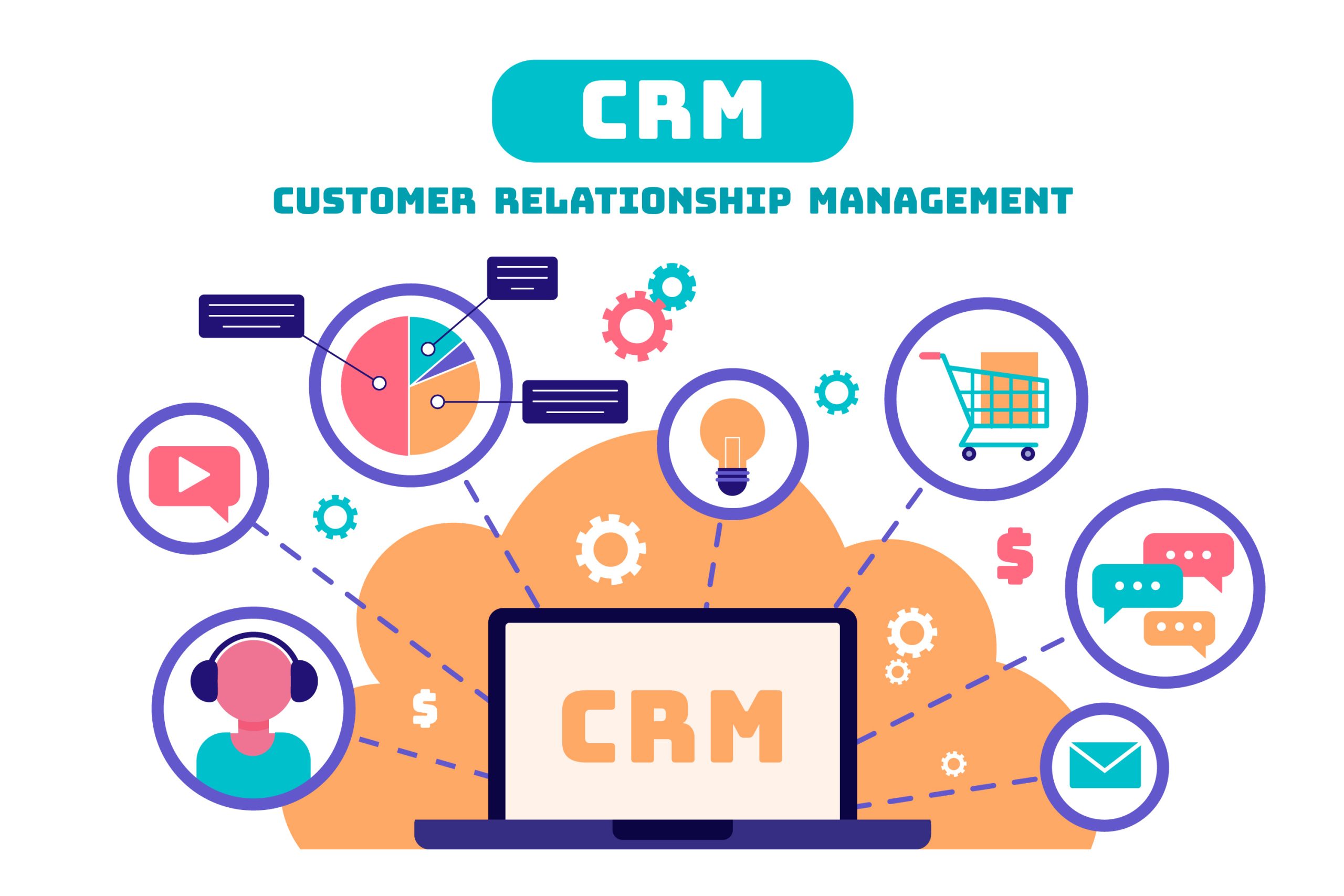The CRM implementation process is a vital part of adopting a Customer Relationship Management (CRM) system. It ensures that the software integrates smoothly into your organization’s workflows while aligning with your strategic goals. A well-executed implementation can revolutionize how businesses manage customer interactions, streamline operations, and achieve sustainable growth.
This guide will walk you through the CRM implementation process, detailing the key steps, the importance of a CRM implementation plan, and how to create a practical CRM implementation roadmap.
Why is the CRM Implementation Process Important?
The CRM implementation process is not just about deploying software. It’s about transforming business processes to maximize customer relationships and operational efficiency. Without proper planning, organizations may face challenges such as:
- Low user adoption rates
- Data migration issues
- Budget overruns
- Poor system performance
A structured CRM implementation plan ensures that businesses avoid these pitfalls and derive the maximum value from their CRM system.
Key CRM Implementation Steps for Success

1. Define Objectives and Requirements
The first step in any successful CRM implementation process is to define clear objectives. What does your business hope to achieve with the CRM? Common goals include:
- Improving customer service
- Enhancing sales pipeline visibility
- Streamlining marketing efforts
- Next, identify the requirements needed to meet these objectives. For example:
What features are essential?
Which departments will use the system?
How will the CRM integrate with existing tools?
2. Assemble a CRM Implementation Team
A dedicated team is crucial for ensuring the project’s success. Include representatives from:
- Sales
- Marketing
- Customer service
- IT
This team will be responsible for creating and executing the CRM implementation plan, ensuring that every department’s needs are considered.
3. Choose the Right CRM System
Selecting the right CRM software is one of the most critical CRM implementation steps. Consider factors such as:
- Scalability to support business growth
- Integration capabilities with existing systems
- User-friendly interface
- Customization options
A thorough evaluation process ensures that the selected system aligns with your business objectives.
4. Create a Detailed CRM Implementation Plan
A robust plan is the backbone of the CRM implementation process. Your plan should include:
- Timeline: Establish deadlines for each phase of the implementation.
- Budget: Allocate funds for software, training, and other resources.
- Roles and Responsibilities: Define who is responsible for each task.
- Success Metrics: Determine how you will measure success, such as user adoption rates and system performance.
A well-structured CRM implementation plan provides clarity and keeps the project on track.
5. Design a CRM Implementation Roadmap
A CRM implementation roadmap is a high-level document that outlines the key milestones and deliverables for the project. It acts as a guide for the implementation team and ensures that all stakeholders are aligned. A typical roadmap includes:
- Phases of implementation
- Key milestones
- Dependencies between tasks
- Expected outcomes
Using a visual format, such as Gantt charts, can make your roadmap more effective and easier to understand.
6. Data Migration and Cleansing
Migrating data from legacy systems to the new CRM is one of the most challenging CRM implementation steps. Key activities include:
- Data Cleansing: Remove duplicate or outdated information to ensure accuracy.
- Data Mapping: Align old data fields with the new system.
- Testing: Validate the migration process to ensure no data is lost.
A well-planned migration strategy minimizes disruptions and ensures a smooth transition.
7. Customize and Configure the CRM System
Customization allows businesses to tailor the CRM system to their unique needs. Examples include:
- Creating custom fields and workflows
- Automating repetitive tasks
- Setting up dashboards for reporting
Configuration also involves integrating the CRM with existing tools, such as ERP systems or marketing platforms. This step ensures a unified approach to data management.
8. Train Users
User adoption is critical for CRM success. Training programs should be comprehensive and tailored to each department. Topics to cover include:
- Navigating the CRM interface
- Managing customer data
- Generating reports and analytics
Providing ongoing support and resources, such as user manuals or helpdesk services, can further enhance adoption rates.
9. Monitor, Optimize, and Iterate
The final step in the CRM implementation process is to monitor the system’s performance and make necessary adjustments. Key activities include:
- Tracking metrics, such as user adoption and ROI
- Gathering feedback from employees
- Resolving technical issues promptly
Regular system updates and optimizations ensure that the CRM continues to meet your business needs.
Challenges in the CRM Implementation Process
While a well-executed CRM implementation roadmap minimizes risks, challenges can still arise. Common issues include:
- Resistance to Change: Employees may be hesitant to adopt a new system.
- Data Quality Issues: Poor data accuracy can hinder CRM effectiveness.
- Integration Complexities: Connecting the CRM with legacy systems may require advanced technical expertise.
- Undefined Objectives: Lack of clear goals can lead to scope creep and delays.
Addressing these challenges requires proactive planning and strong leadership.
Benefits of a Well-Planned CRM Implementation Process
A successful CRM implementation plan delivers numerous benefits, including:
- Improved Customer Relationships: Gain insights into customer behavior and preferences.
- Enhanced Collaboration: Centralize data to improve interdepartmental communication.
- Increased Efficiency: Automate routine tasks and streamline workflows.
- Better Decision-Making: Access real-time analytics for data-driven strategies.
These advantages not only boost productivity but also drive long-term growth.
Best Practices for CRM Implementation
1. Start Small
Begin with a pilot project to test the system and gather feedback. This approach allows you to identify and resolve issues before full deployment.
2. Involve Stakeholders
Engage stakeholders from all departments early in the process to ensure buy-in and alignment.
3. Focus on User Experience
Design a user-friendly interface and provide adequate training to encourage adoption.
4. Review and Optimize Regularly
Conduct periodic reviews to ensure that the CRM continues to meet your business needs.
5. Seek Professional Help
Consider partnering with a CRM consultant to guide you through the CRM implementation process and ensure success.
Creating a Long-Term CRM Implementation Roadmap
While the initial implementation focuses on deployment, a long-term roadmap ensures that the CRM system evolves with your business. Key components include:
- Ongoing Training: Equip new employees with the skills to use the system effectively.
- System Updates: Regularly update the CRM to take advantage of new features and security enhancements.
- Scalability Planning: Ensure the system can support future growth and changes in business operations.
A forward-looking roadmap maximizes the value of your CRM investment.
Conclusion: Setting Your Business Up for Success
The CRM implementation process is a journey that requires careful planning, clear objectives, and a structured approach. By following the key CRM implementation steps, creating a comprehensive CRM implementation plan, and leveraging a well-defined CRM implementation roadmap, businesses can ensure a seamless deployment that delivers lasting results.
Whether you’re adopting a CRM for the first time or upgrading your current system, investing time and resources into the implementation process will pay off in the form of improved efficiency, stronger customer relationships, and sustainable growth.
































































